Four moles of an ideal gas is initially in a state A having pressure 2×105N/m2 and temperature 200 K . Keeping pressure constant the gas is taken to state B at temperature of 400K. The gas is then taken to a state C in such a way that its temperature increases and volume decreases. Also from B to C, the magnitude of dTdV increases. The volume of gas at state C is eaual to its volume at state A. Now gas is taken is initial state A keeping volume constant. A total of 1000 J heat is rejected from the sample in the cyclic process. Take R=8.3J/K/mol.
Which graph between temperture T and volume V for the cyclic process is correct.
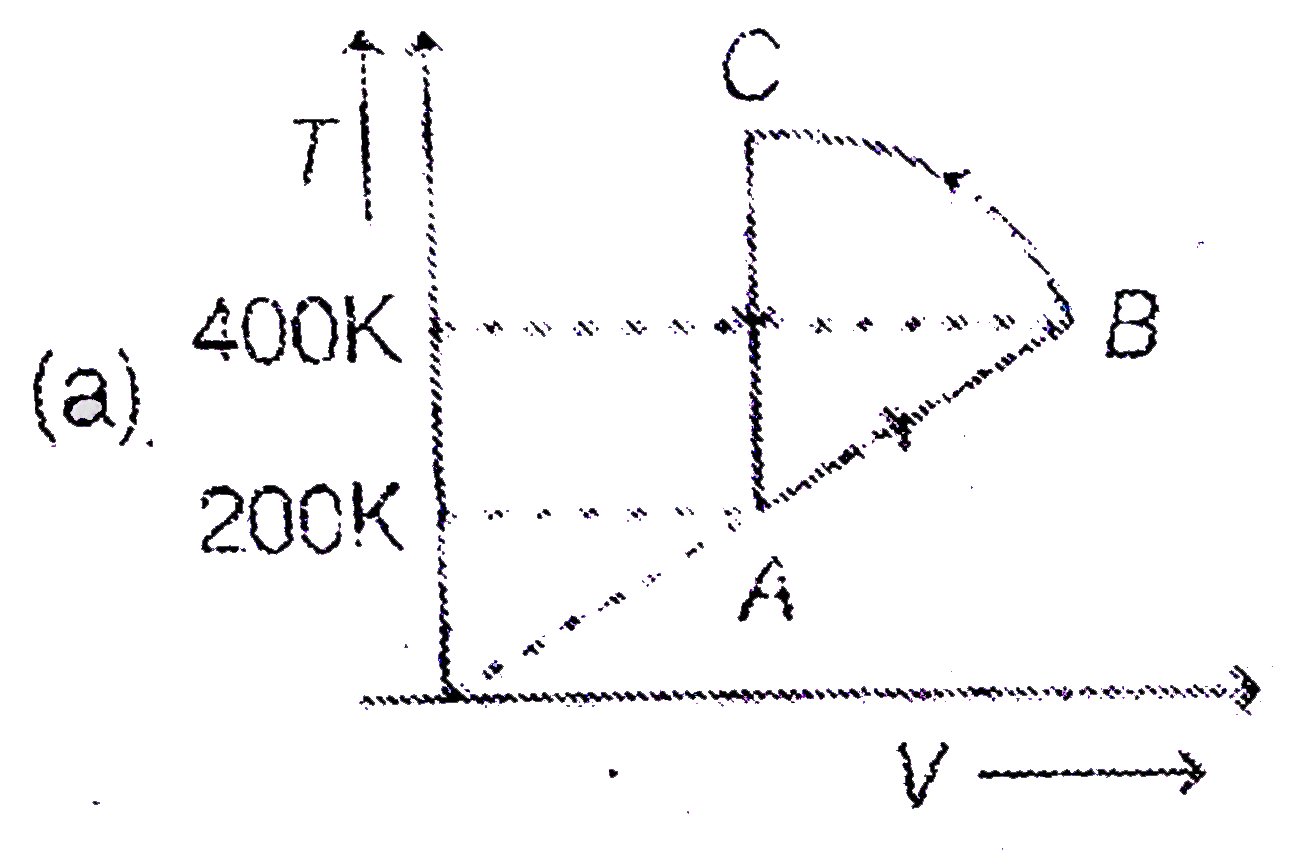
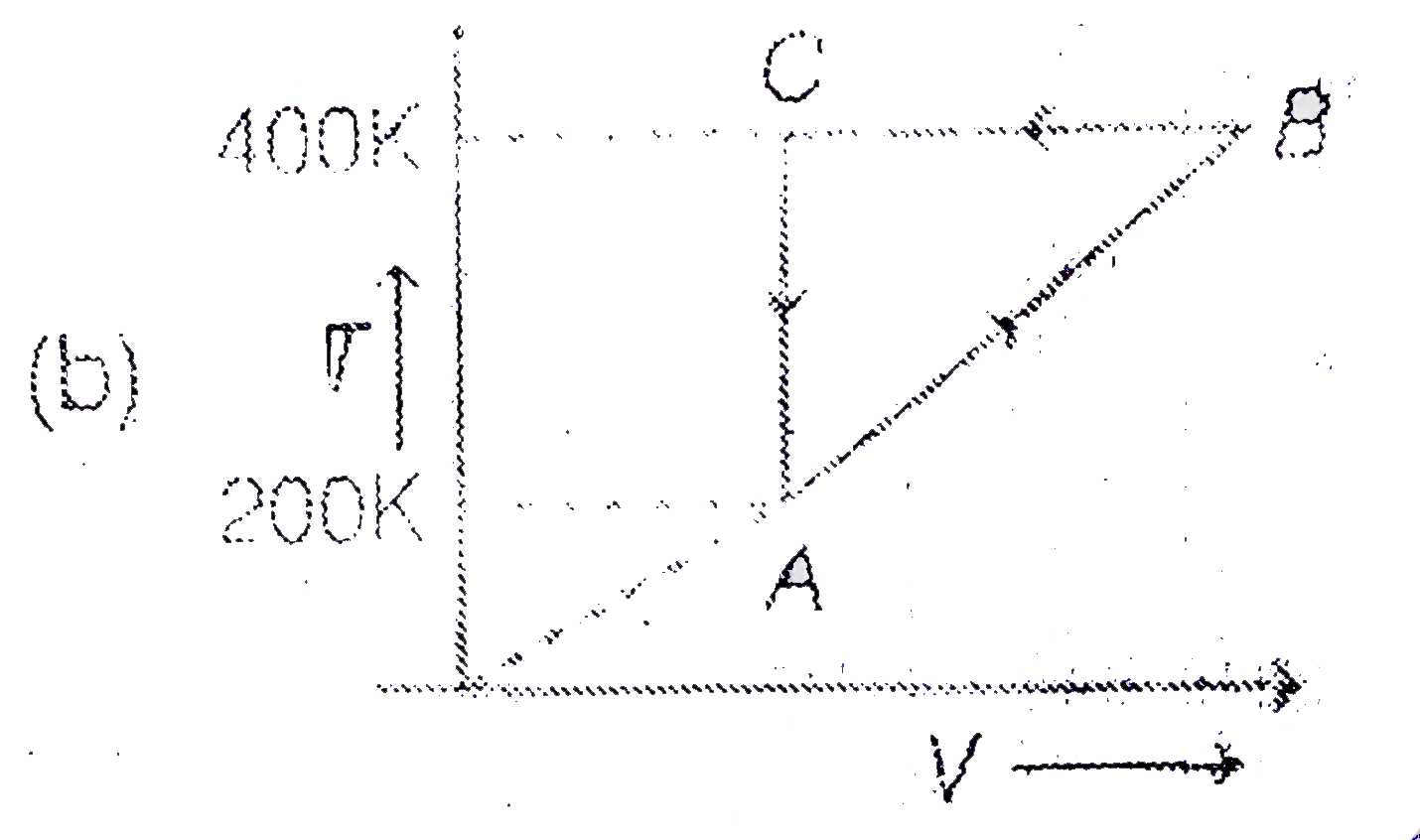
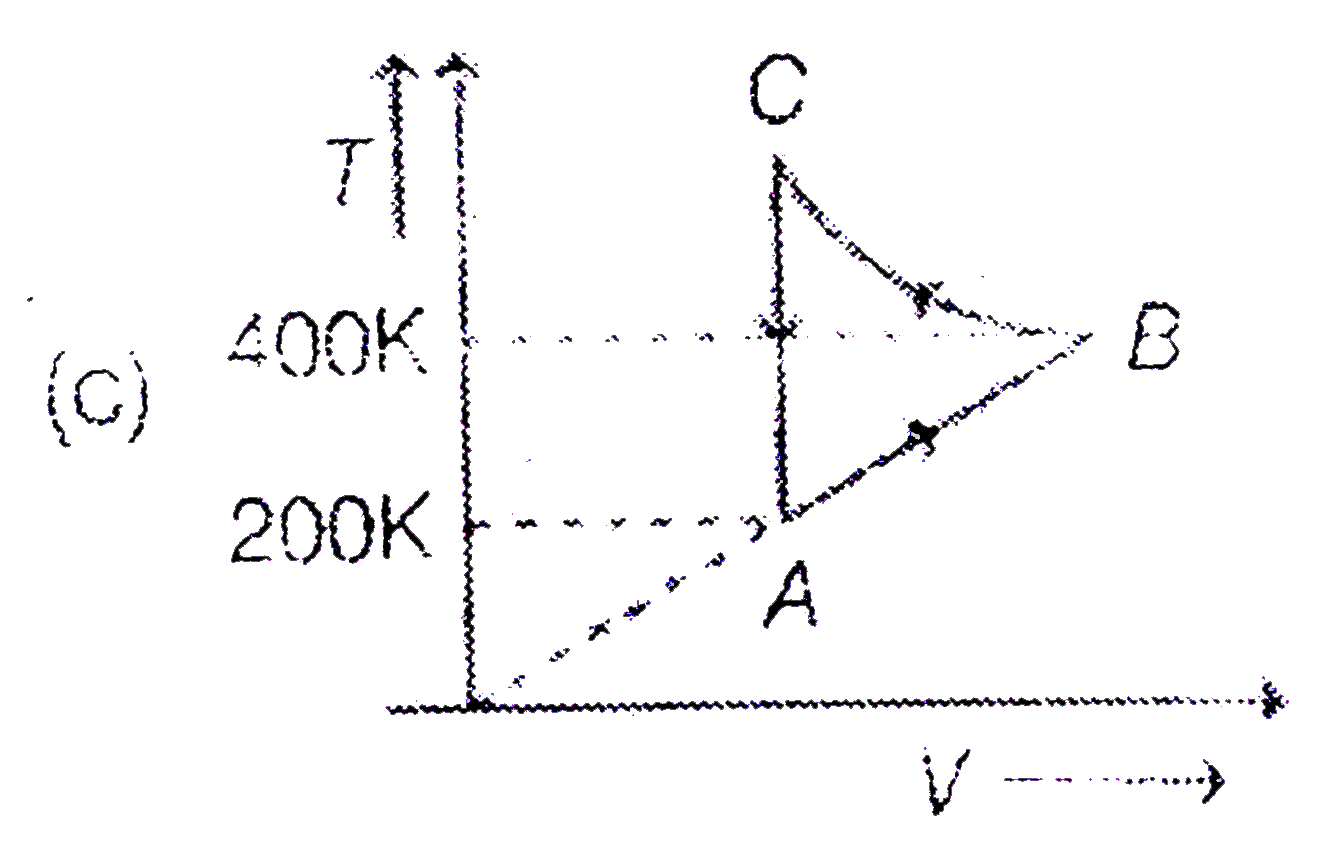
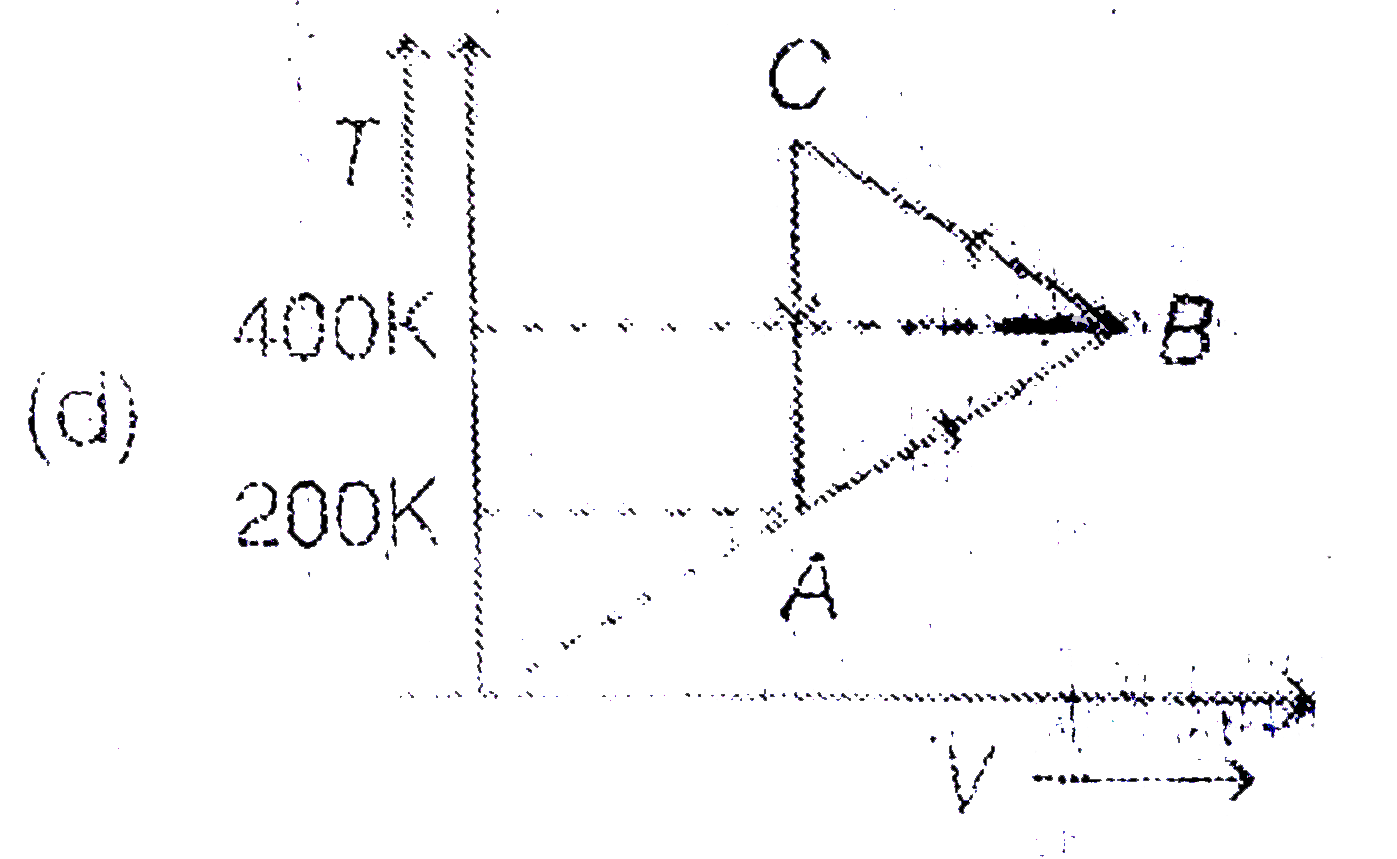
The correct Answer is:C
Step by step video, text & image solution for Four moles of an ideal gas is initially in a state A having pressure 2xx10^(5)N//m^(2) and temperature 200 K . Keeping pressure constant the gas is taken to state B at temperature of 400K. The gas is then taken to a state C in such a way that its temperature increases and volume decreases. Also from B to C, the magnitude of (dT)/(dV) increases. The volume of gas at state C is eaual to its volume at state A. Now gas is taken is initial state A keeping volume constant. A total of 1000 J heat is rejected from the sample in the cyclic process. Take R=8.3J//K//mol. Which graph between temperture T and volume V for the cyclic process is correct. by Physics experts to help you in doubts & scoring excellent marks in Class 11 exams.
Updated on:21/07/2023Topper's Solved these Questions
Similar Questions
The following graphs are plotted for an ideal gas taken from state A to state B and then to state C, maintaining volume constant.
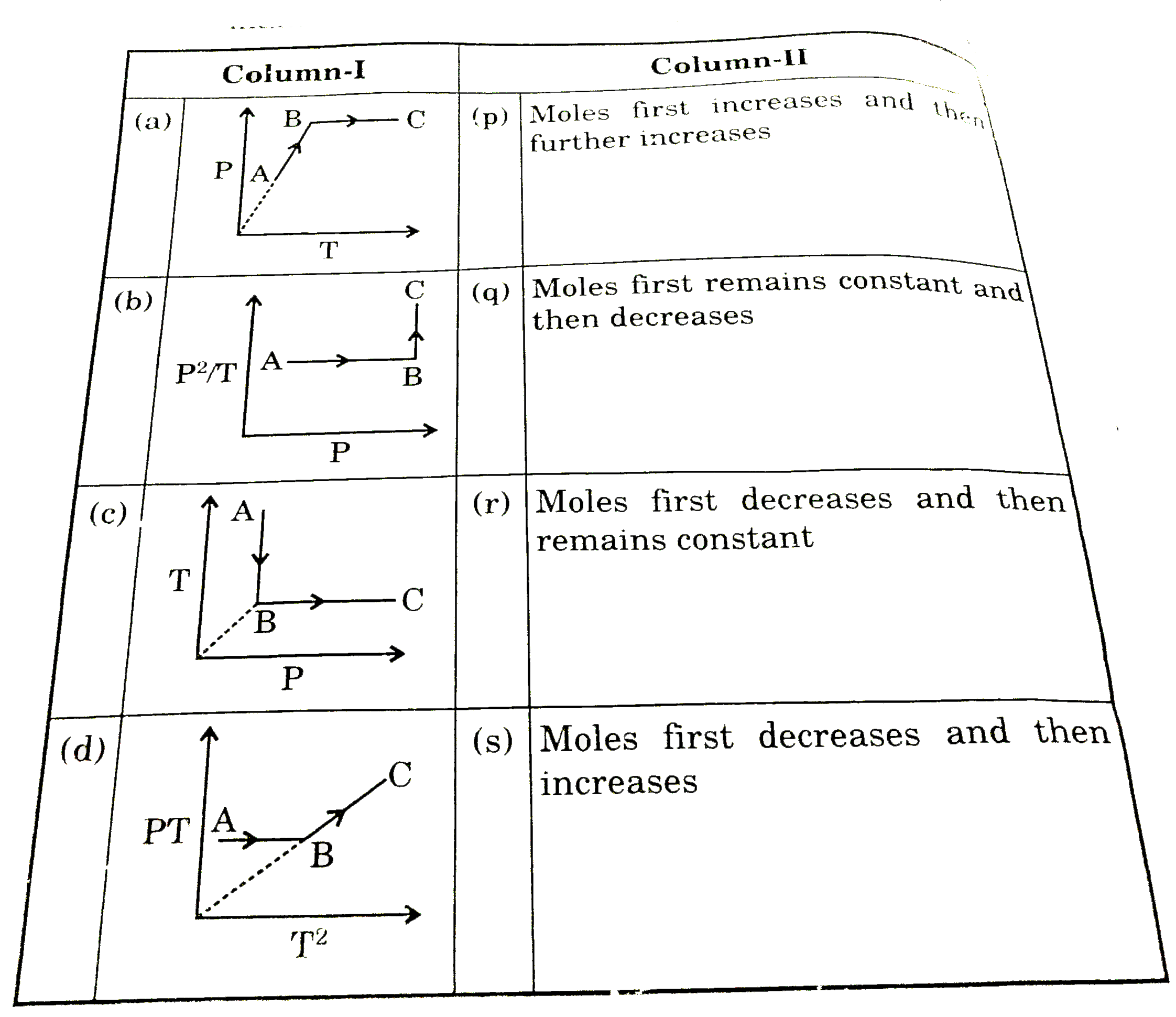
View SolutionTwo moles of a confined ideal monatomic gas begin at state A in the pressure-volume graph and follow the path shown to state D. If the temperature of the gas at A is 54 K, what is the temperature of the gas at D?
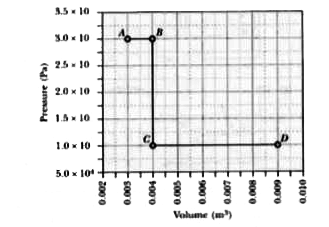
View Solution
Knowledge Check
Four moles of an ideal gas is initially in a state A having pressure 2×105N/m2 and temperature 200 K . Keeping pressure constant the gas is taken to state B at temperature of 400K. The gas is then taken to a state C in such a way that its temperature increases and volume decreases. Also from B to C, the magnitude of dTdV increases. The volume of gas at state C is eaual to its volume at state A. Now gas is taken is initial state A keeping volume constant. A total of 1000 J heat is rejected from the sample in the cyclic process. Take R=8.3J/K/mol.
The work done by the gas along path B to C isA1000JB−1000JC−7640JD5640JFour moles of an ideal gas is initially in state A having pressure 2×105N/m2 and temperature 200K . Keeping the pressure constant the gas is taken to state B at temperature of 400K. The gas is then taken to a state C in such a way that its temperature increases and volume decreases. Also from B to C , the magnitude of dT/dV increases. The volume of gas at state C is eqaul to its volume at statem A. Now gas is taken to initial state A keeping volume constant. A total 1000J of heat is withdrawn from the sample of the cyclic process . Take R=8.3J/K/mol.
Which graph between temperature T and volume V for the cyclic process is correct.A (##BMS_V06_C02_E01_249_O01.png" width="30%">B (##BMS_V06_C02_E01_249_O02.png" width="30%">C (##BMS_V06_C02_E01_249_O03.png" width="30%">D (##BMS_V06_C02_E01_249_O04.png" width="30%">Four moles of an ideal gas is initially in state A having pressure 2×105N/m2 and temperature 200K . Keeping the pressure constant the gas is taken to state B at temperature of 400K. The gas is then taken to a state C in such a way that its temperature increases and volume decreases. Also from B to C , the magnitude of dT/dV increases. The volume of gas at state C is eqaul to its volume at statem A. Now gas is taken to initial state A keeping volume constant. A total 1000J of heat is withdrawn from the sample of the cyclic process . Take R=8.3J/K/mol. The volume of gas at state C is
A0.0332m3B0.22m3C0.332m3D3.32m3
One mole of an ideal monoatomic gas is taken at a temperature of 300K. Its volume is doubled keeping its pressure constant. Find the change in internal energy.
View SolutionCan the temperature of a gas increased keeping its pressure and volume constant ?
View SolutionFour moles of an ideal gas is initially in state A having pressure 2×105N/m2 and temperature 200K . Keeping the pressure constant the gas is taken to state B at temperature of 400K. The gas is then taken to a state C in such a way that its temperature increases and volume decreases. Also from B to C , the magnitude of dT/dV increases. The volume of gas at state C is eqaul to its volume at statem A. Now gas is taken to initial state A keeping volume constant. A total 1000J of heat is withdrawn from the sample of the cyclic process . Take R=8.3J/K/mol.
The work done in path B to C is
View SolutionTwo moles of an idea gas is initially in state A having pressure 1.01×105N/m2 and temperature 3O0k keeping pressure constant the gas is taken to state B temperature at B is 500K the gas is then taken to state C in such a way that its temperature increases and volume decreases also from B To c the magnitude of dTdV increases the volume of gas at C is equal to volume of gas at A now the gas is taken to initial state A keeping volume constant A total of 1200 J of heat is with drawn from the sample in the cyclic process the T-V graph for the cyclic process and work done in path B to C are respectively(takeR=8.3J/k/mol)
View SolutionWhat is the effect on the pressure of a gas if its temperature is increased at constant volume ?
View Solution
